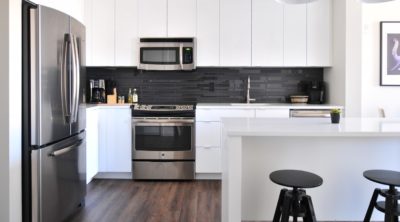
For some individuals, home elevators are a symbol of luxury and status. But, for many people, it means saving time, effort and energy. To know more about the types and costs of elevators, read on…
Nowadays, it is a trend to have a home or residential elevator installed. It is not an extravagant expenditure. It adds to your mobility by making every floor of your home easily accessible to you. Home elevators are very useful for the individuals with disabilities who have restricted mobility. In addition to using them to transport you between floors, you can use them to carry bulky things such as grocery, laundry and things that are difficult to carry between the floors using the stairs.
Types of Elevators
Elevators are differentiated on the basis of how they operate.
Hydraulic elevators
From the point of safe operations, these are reputed to be reliable. Machine room for this type of elevator is built into the basement, and offers easy access to rescuers during emergencies such as, fire, power outage and earthquake. The elevator cage, if it is needed, can be lowered manually, though at a slow-speed.
Electric or Traction elevators
A counterweight, machine drive and the elevator cab are the main components of this system. The machine room is usually located at the top of the building and the machine drive is incorporated in or located next to the hoist way. These elevators are not rated as high as hydraulic ones, safety-wise, as the cab is vulnerable in a shaking building which can happen during an earthquake.
Overhead winding drum elevators
They do not employ machine rooms and counterweights and hence, are most suitable for installation in pre-existing structures without too much of modifications. Winding drum drive system with adjustable drum settings is the main feature of this elevator.
Vacuum or Pneumatic lift elevators
To facilitate the cab movements, these systems relies on the power of suction. To go in upward direction, the system creates vacuum at the top end of the cab and vice versa.
Installation cost of an elevator in an existing home will essentially be more than the one that is under construction. In the latter case, the architect can change or amend the plans of the home to accommodate the installation. In the former case, a contractor will have to visit your home to determine the extent and the cost of the construction required in installing it. As you can guess, this is costlier than installing an elevator in a house under construction.
Costs of Elevators
Selecting a home elevator is like choosing a vehicle for family use. Its price is influenced by its size, carrying capacity, safety features, speed, number of floors it will serve and the additional accessories you want installed in it. The installation and operation also influences the overall cost. Luxury residential elevators can make your home stylish and add value to your house if you plan to move in future.
If you compare the different types of home elevators that are available in the market, you will find the installation costs to be in the range of $7,800-$40,000. On the other hand, a custom-made elevator may cost you more than $100,000. In addition, there is cost of obtaining building permit which can range from $200 to $1,000 depending on the laws of the state you reside in. If you are opting to go for an elevator for your home because of a medical necessity then know that the law grants you some tax benefits for such a purchase.
Elevators on Tracks
In case of these elevators, tracks are fixed to a load bearing wall. And the elevator cab uses them to travel between the floors. The floors of the house are designed or reconstructed to allow for a rectangular shaft to extend from the bottom to the top floor which the elevator cab uses for its movement. Whenever the cab is resting on a floor, a hatch covers the opening in the floor above. Because of tracks, constructing an enclosed shaft for the cab is unnecessary. It reduces the cost of installation and space too, is saved. These elevators can carry up to 500 lbs (227 kg) of weight to a height of 16 feet and offer 2-3 stops. These elevators cost in the range of $7,000-$10,000.
Shaft Elevators
These elevators can carry up to 750 lbs (340 kg) of weight, to a height of 23 feet, with 2-3 stops. A shaft is constructed in which the elevator operates. The price is in the range of $13,000-$18,000. The shaft increases the cost of installation and consumes valuable space. Heavy-duty variants of this elevators type can carry up to 1,400 lbs (635 kg) of weight to a height of 50 feet at 30 feet per minute, with 4-6 stops.
Vacuum Elevators
This type of elevator needs no shaft, pit or engine room. They can be installed in the house, without making any structural changes at all to the floors. They incorporate vacuum technology and can carry 440 lbs (200 kg) to the height of 30-35 feet, with 2-3 stops. These elevators can move at a speed of 25-30 feet per minute. Their unique feature is that they can be dismantled and erected at any another place easily. Vacuum home elevators cost more than the other types.
Stair Lifts
Climbing stairs can be a difficult task for senior citizens. Stair lifts, a kind of elevator, can help them to travel between the floors. A stair lift runs on a track, which is installed on the walls along the staircase. It has a comfortable seat. Its speed can be controlled using manual or a remote control. A stair lift can operate using AC or DC, as well as using a battery backup. Stair lifts are available in the range of $1,200-$2,500. If they are customized, then the total cost of installation rises.
It is estimated that a home elevator occupies only 25% of space in comparison to the stairs in a house. Modern versions are provided with an emergency telephone, battery back-up, automatic controls, handrails, emergency lighting and emergency stop buttons. Application of advanced technology to enhance its safety features and ensure its trouble-free use, has resulted in a product that even a child can safely use. It is a time-tested and trusted device to have in your place.


